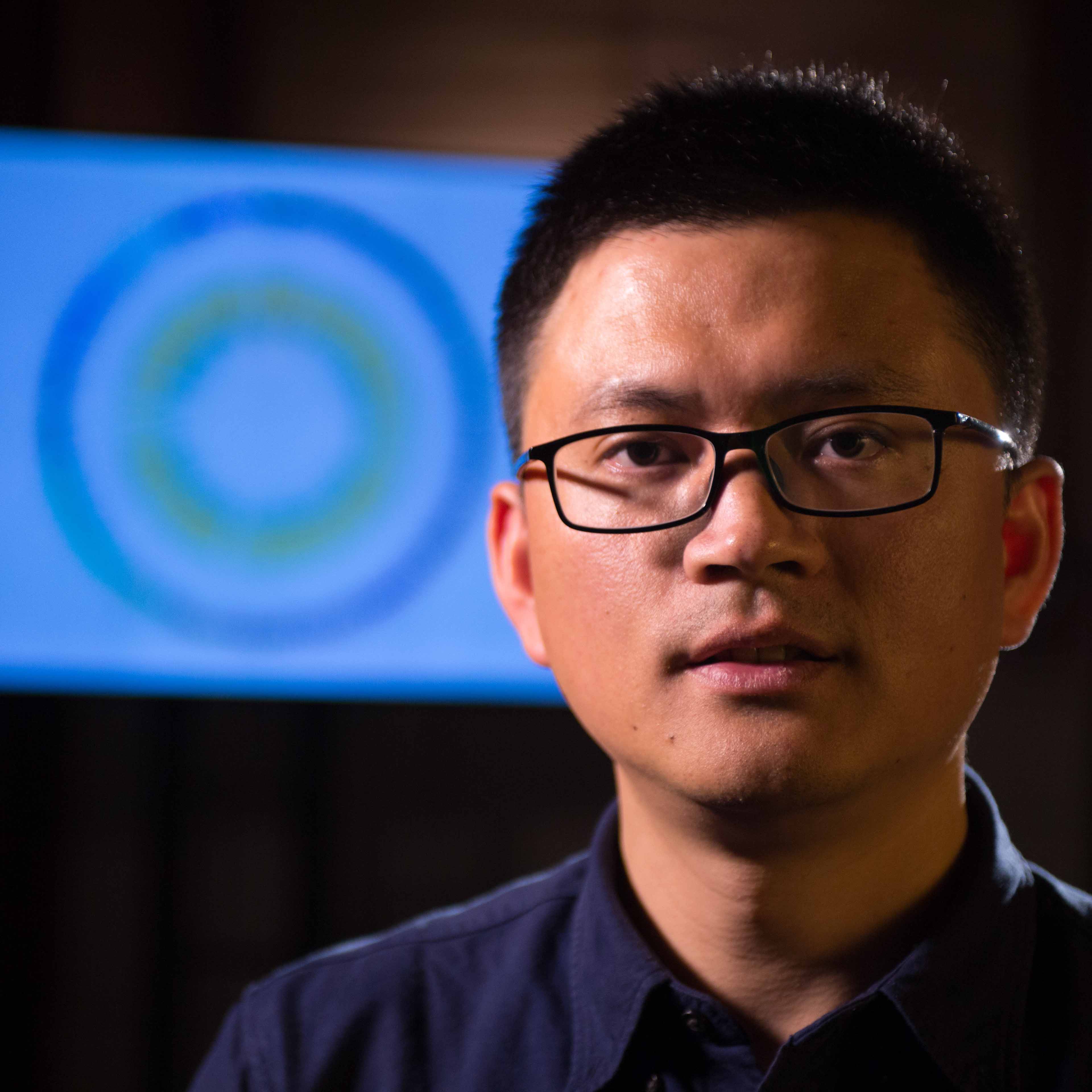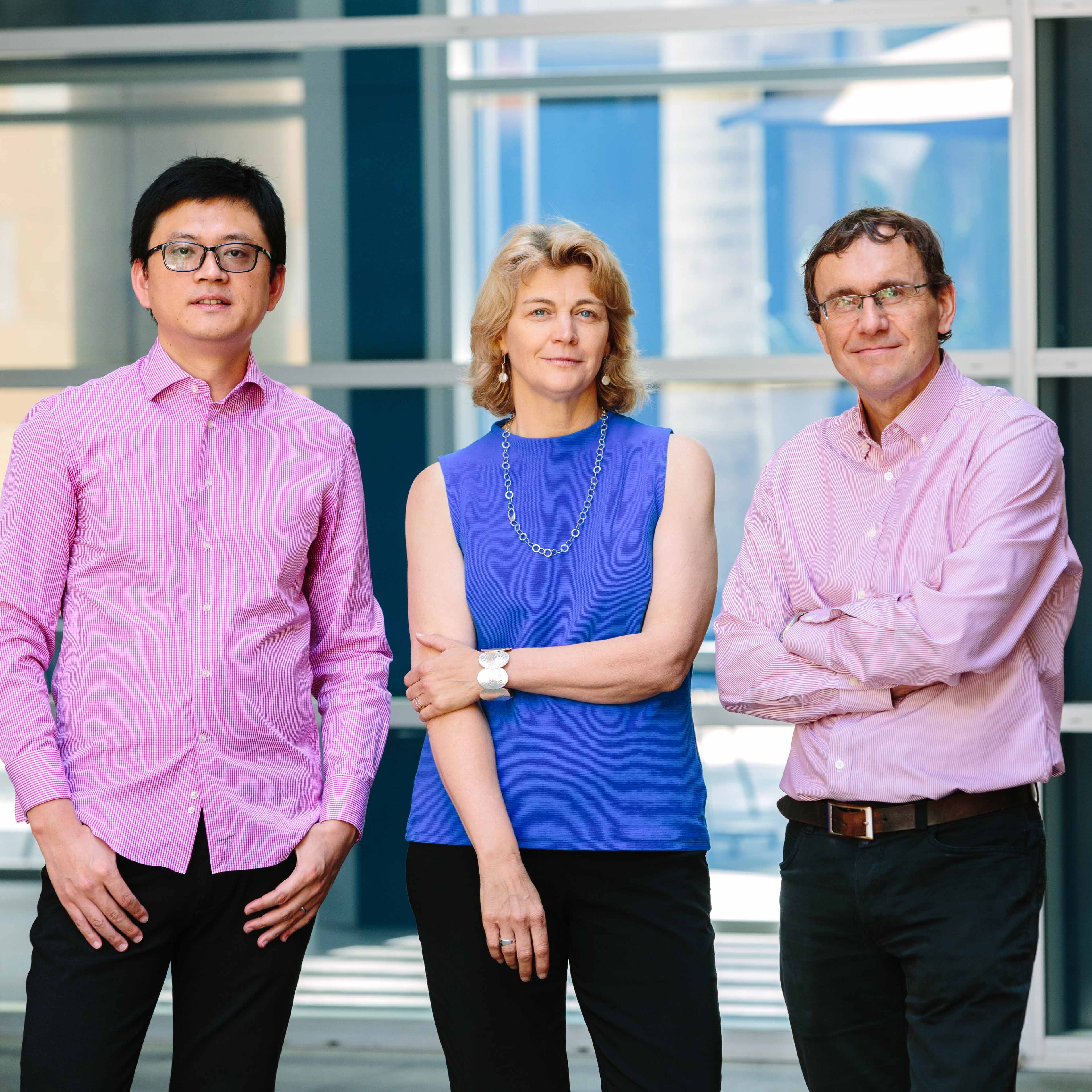Professor Jian Yang’s pioneering work towards understanding inherited traits and the human genome saw him awarded a professorship in fewer than nine years post-PhD and the Prime Minister’s Prize for Life Scientist of the Year in 2017.
Now, Professor Yang is taking his considerable talents back to his homeland of China, leaving behind a legacy of world-class research.
Where are the missing genes?

Since we began to screen whole genomes in the late 1990s, it was predicted that researchers would able to find the genes responsible for genetic diseases such as schizophrenia, obesity, and diabetes.
But as it turns out, geneticists consider themselves lucky to identify the genes that account for just a small fraction of the variance between humans when it comes to certain traits and diseases. Yet twin and family studies had shown that for most traits and diseases a large fraction of individual differences was due to genetic factors.
What was going on?
For decades, this mystery of the ‘missing heritability’ left the greatest minds in genetics stumped, then Professor Yang and colleagues figured out what everyone else had failed to see.
“It’s a puzzle that has troubled the whole field for a long time: why is it so difficult to map genes for human conditions like schizophrenia and diabetes?” he said.
Yang’s research revealed that it wasn’t as simple as a handful of genes working together to produce a certain trait or disease.
Instead, genetic variability is caused by hundreds or thousands of DNA variants, each producing a slight effect to contribute to a person’s chance of ending up with that trait or disease.
The difference of a large sample
And not only that, but he found that the combined effect of these multiple genes is undetectable in a small sample size, which explains why no one had noticed it until recently.
“We called it the polygenetic model - managing issues of small effect,” Professor Yang said.
“If you can imagine all these individual effects are so small, then in a small sample size you don’t have enough statistical power to detect them. That’s why we need a large sample.”
One of IMB’s greats

IMB’s Director Professor Ian Henderson said that Professor Yang is undoubtedly one of IMB’s great individuals, an exceptional team player, and a researcher who has brought many accolades to IMB and UQ.
“As a result of his tremendous work ethic and paradigm-shifting contributions, he rose through the academic ranks to become a full professor and one of Australia’s top 40 researchers under 40.”
Forming an indomitable team with Professors Peter Visscher and Naomi Wray, the trio have made massive strides in genomics, setting up the Program in Complex Trait Genomics (PCTG), focussing on understanding individual differences between people that are caused by genetic factors.
Discovering genetic variants
Yang works with large data samples captured from tens of thousands of people to magnify the signal from where multiple genes expressing certain diseases and traits are located within the human genome.
“We share more than 99% of our genome across our human population. But there are a lot of genomic positions with variants in the population, so we need to know what these DNA variants are,” he explained.
In his lab at the IMB, Yang identified the genes that influence height and high-altitude adaptation, plus those that impart an increased risk of schizophrenia, rheumatoid arthritis, and type-2 diabetes.
Influenced by both genes and the environment

“We’re always interested in understanding what’s going on with our phenotypes [how physical traits and behaviours are influenced by genes and the environment],” Professor Yang said.
“For example, is obesity or body mass index (BMI) controlled by genes? If this is true, what proportion of variation is due to genes, and how much is due to environmental factors?”
Yang’s research has strong links to population and evolutionary genetics, which attempts to explain why our genomes have evolved to harbour variation associated with many human traits.
A key example of understanding trait variation and adaptation to extreme environments is how a small population has survived atop the Tibetan Plateau for thousands of years, despite the dangerously low levels of oxygen and dangerously high levels of harmful ultra-violet (UV) light.
Yang discovered the genetic variants that enable these high-altitude Tibetans to process lower levels of oxygen in the blood, while also surviving more intense UV radiation.
His findings show that adaptation and evolution through natural selection is not dependent on just a few genes, but on many genes and phenotypes that cause gradual changes within a population.
Hence the genomes of our ancestors also contained many DNA variants that influence traits, just as we observe today when studying common disease.
His talents were spotted at a conference in 2007

Professor Visscher spotted Professor Yang 13 years ago at a conference in China and immediately recognised his talent.
“Jian is one of the smartest minds I’ve ever met,” Professor Visscher said.
“He had memorised all the names and faces of the invited speakers and was able to welcome me by name at the door.”
“After chatting to him, I soon realised that I wanted his bright mind in our team, and he has been a powerful force in Brisbane since he arrived in 2008.”
A team player at IMB
A real team player, Jian has worked closely with many researchers in IMB, including Professor Grant Montgomery, who uses genetic approaches to discover critical genes and pathways increasing risk for reproductive disorders.
“It has been a pleasure and a privilege to work with Jian Yang - his insights into the genetic architecture of common human diseases and methods for combining genomics data from multiple sources have transformed how we understand these concepts, and statistical software we use routinely in our studies was developed by him.”
May the collaborations continue
IMB researchers hope there will still be many fruitful collaborations with Professor Yang to come.
“While we are saddened to see Jian leave, we are delighted that Queensland, UQ and IMB have been a place that Jian could grow, and springboard into the next stage of his career,” Professor Henderson said.
“We can’t wait to see what puzzles he solves in the years to come.”



